Revolutionizing Satellite Attitude Control: Spherical Motor-driven Control Moment Gyroscope
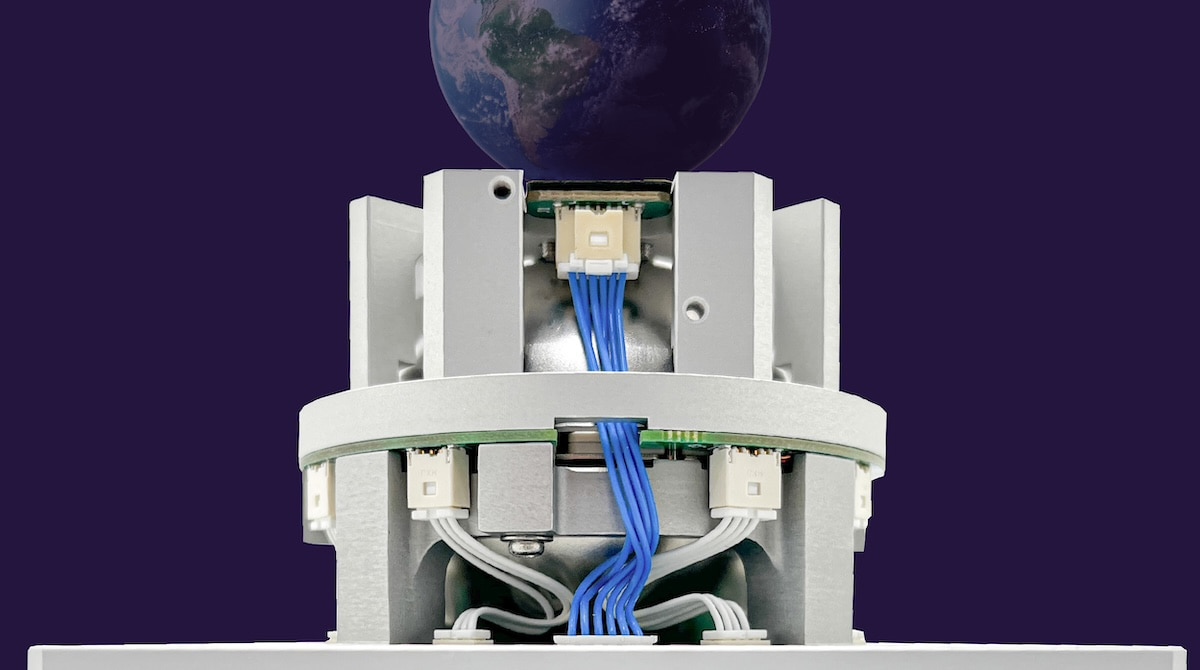
Authored by Afan Huang
Discover how Tensor Tech’s spherical motor-driven control moment gyroscope overcomes traditional limitations in satellite control systems by reducing volume, eliminating singularities, and increasing reliability.
〈Related Reading:What Is a Control Moment Gyroscope (CMG)? A Powerful Solution for Satellite Attitude Control〉
Why Innovation in Control Moment Gyroscope Matters
Satellite missions today demand high precision, high agility, compact design, and power efficiency — placing pressure on traditional attitude control systems. Control Moment Gyroscopes (CMGs), especially those using advanced motor architectures, are emerging as a superior solution. In this article, we explore Tensor Tech’s breakthrough in CMG design using spherical motor technology, and how it enables new levels of performance, volume reduction, and reliability.
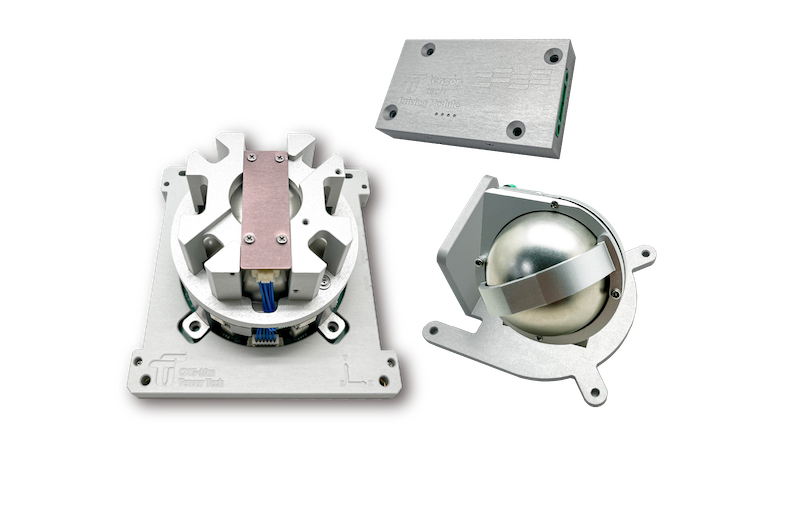
TensorCMG driven by the spherical motor developed by Tensor Tech
Tensor Tech’s Control Moment Gyroscope Innovation: Powered by Spherical Motor Technology
1. From Traditional CMGs to SGCMG driven by Spherical Motor
Conventional CMGs use two separate motors — one for spinning the rotor and another for gimbal actuation — which increases system size and requires slip rings for electrical routing, impacting the overall reliability of the system. Tensor Tech’s innovation eliminates this dual-motor setup by using a single spherical motor. This integrates rotor spin and gimbal tilt into one electromagnetic structure, resulting in a fully magnetic, slip-ring-free design that simplifies the Control Moment Gyroscope architecture and maintains a symmetric, compact form regardless of orientation.
2. Volume Comparison: Tensor Tech’s Control Moment Gyroscope vs. Traditional SGCMG vs. Reaction Wheels
When comparing small satellite actuator size for equivalent momentum capacity:
-
Traditional SGCMGs are tall and require skewed gimbals, increasing cluster volume.
-
Reaction wheels may look compact in isolation but occupy more space when arranged in full 3-axis clusters.
-
Tensor Tech’s Control Moment Gyroscopes, thanks to their spherical form and all-in-one design, retain a low-profile, symmetric shape even when skewed.
Tensor Tech’s Control Moment Gyroscope cluster is the most compact and integration-friendly of all.

Volume comparison among Traditional SGCMG, Tensor Tech’s Control Moment Gyroscope by spherical motor, and Reaction Wheel based on a single unit (volume ~ r3)

Total system volume of a four-actuator pyramid cluster across technologies. CMGs based on the spherical motor offer the lowest system volume.
3. Integration Benefits Beyond Size
This reduction in volume translates into:
-
Lower total satellite mass and volume and/or additional mass and volume for payload
-
Simplified structural and thermal integration
-
Easier harnessing and internal layout planning
This is especially critical for small satellites, constellation missions, and power- or volume-constrained platforms.
4. Eliminating Failure Points: A Slip-Ring-Free Approach
Traditional Control Moment Gyroscope rely on slip rings — components prone to wear and signal degradation. Tensor Tech’s electromagnetic design avoids this entirely. By using a contactless magnetic field to control all rotor motions:
-
No mechanical friction
-
No rotational limits due to wiring
-
Increased lifetime and reduced maintenance
In turn, control algorithms can focus on power optimization and smooth maneuvers, not avoiding wear or thermal issues
Performance Analysis: Angular Momentum and Fault Tolerance
1. Angular Momentum Envelope: Why It Matters
The angular momentum envelope represents the total 3D torque capability of an actuator cluster. The larger and more spherical the envelope, the more maneuverable and flexible the spacecraft.
2. Comparing Clusters: Reaction Wheels vs. Control Moment Gyroscopes
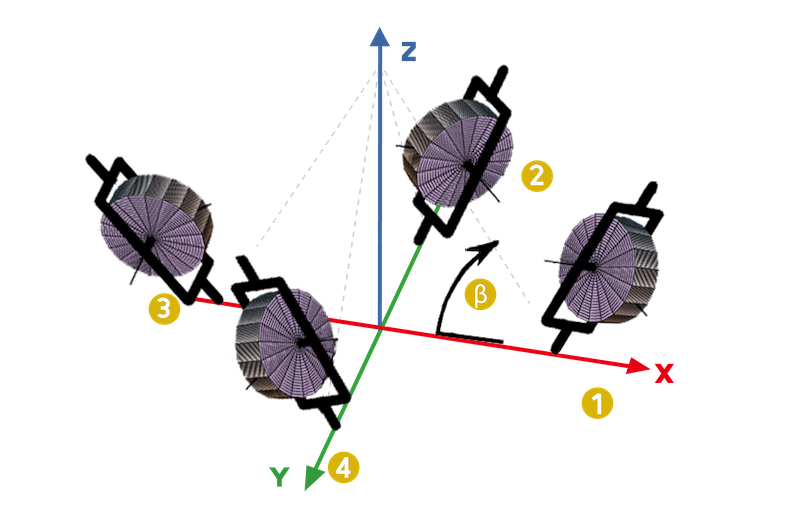
Pyramid cluster configuration of four angular momentum actuators
Reaction Wheel Cluster:
4 units in a pyramid provide a limited, faceted envelope (~1.5 Nms radius). Fixed-axis momentum storage restricts agility.
Constant-Speed CMG Cluster (CSCMG):
Improved agility (~2.8 Nms envelope radius), but singularities can prevent access to certain directions.
Tensor Tech’s VSCMG (Spherical Motor):
Offers a large, singularity-free envelope (~2.8 Nms), fully reachable in all directions thanks to variable-speed control and rotor orientation freedom.
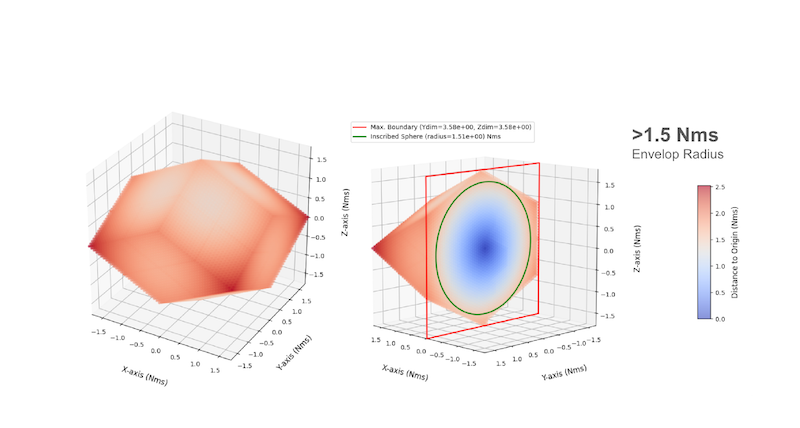
Angular momentum envelope for four units of 1-Nms reaction wheels in a pyramid cluster, inscribed radius ~1.5 Nms.
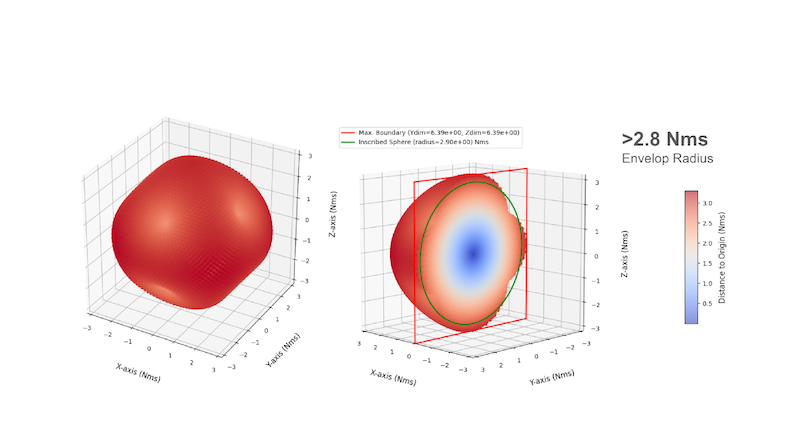
Angular momentum envelope for four 1-Nms constant-speed CMGs (CSCMGs). Radius ≈ 2.8 Nms, but subject to singularity conditions.
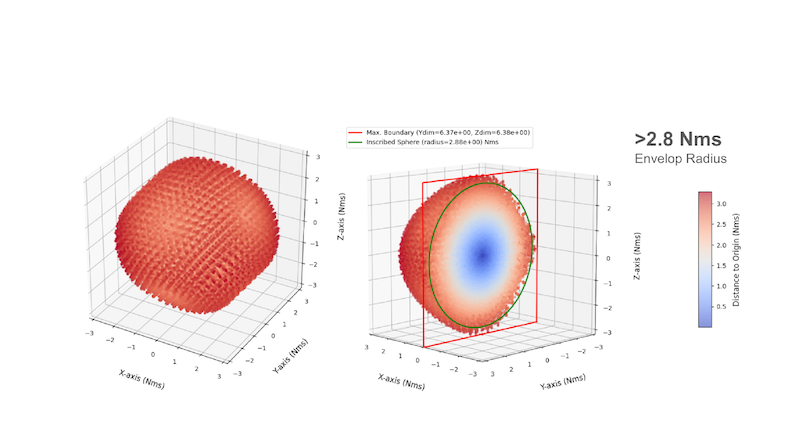
Angular momentum envelope for 1-Nms spherical-motor VSCMG pyramid cluster. Singularity-free, fully reachable volume.
C. Redundancy and Degraded Control
If two of four actuators fail:
Reaction Wheels:
Lose 3-axis control
CSCMGs:
Lose access to full angular envelope
Tensor Tech VSCMGs:
Maintain 3-axis control with a smaller envelope, thanks to dynamic redistribution and singularity-free operation
This gives mission designers built-in fault tolerance without needing extra actuators — a major advantage for long-duration or autonomous missions.
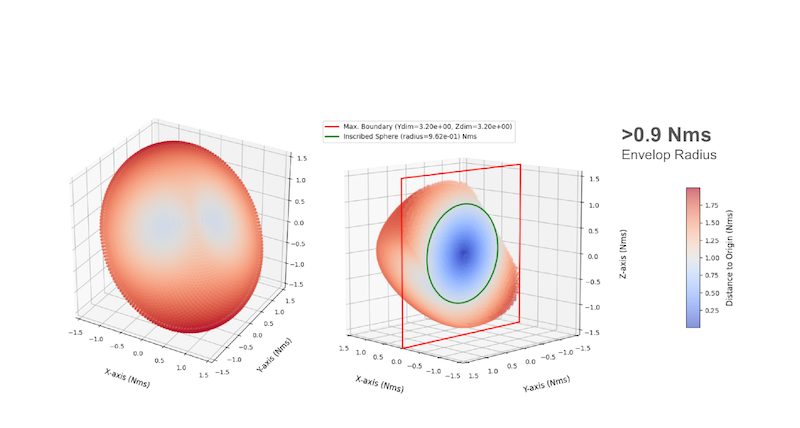
Angular momentum envelope for four units of 1-Nms spherical-motor VSCMG in a pyramid cluster under two VSCMG failures, where the remaining pair operates as an adjacent configuration to maintain three-axis control with reduced envelope radius.
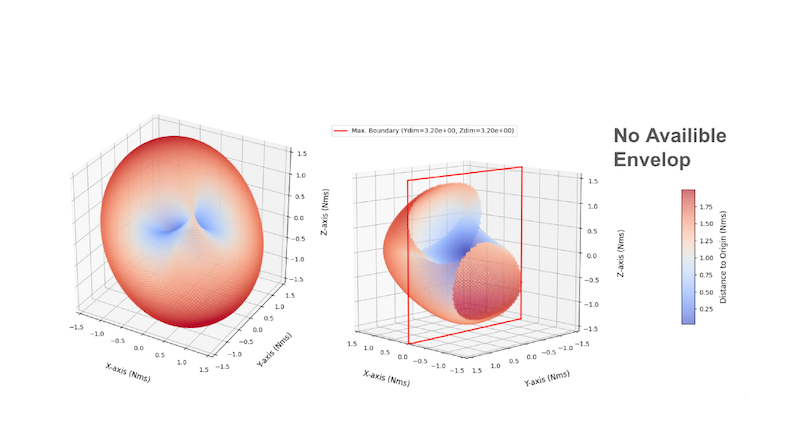
Angular momentum envelope for four units of 1-Nms constant-speed CMGs (CSCMGs) in a pyramid cluster under two CSCMG failures.
Conclusion: New Style of Control Moment Gyroscope for Agile, Reliable ADCS
Tensor Tech’s spherical motor-driven control moment gyroscope represents a major advancement in satellite attitude control. Compared to traditional CMGs and reaction wheels, it offers:
-
Smaller actuator and cluster volume(except for 1 to 3U CubeSats)
-
Slip-ring-free architecture for high reliability
-
Singularity-free operation for full-envelope control
-
Built-in redundancy without extra hardware
For satellites across LEO, MEO, or GEO — especially in responsive or high-maneuver missions — Tensor Tech’s Control Moment Gyroscope is a compact, energy-efficient, and future-proof solution for next-generation ADCS systems.If you have any Control Moment Gyroscope needs, feel free to get in touch anytime.
〈Related Product Recommendations:Control Moment Gyroscope〉
〈Related Product Recommendations:SmallSat CMG〉

